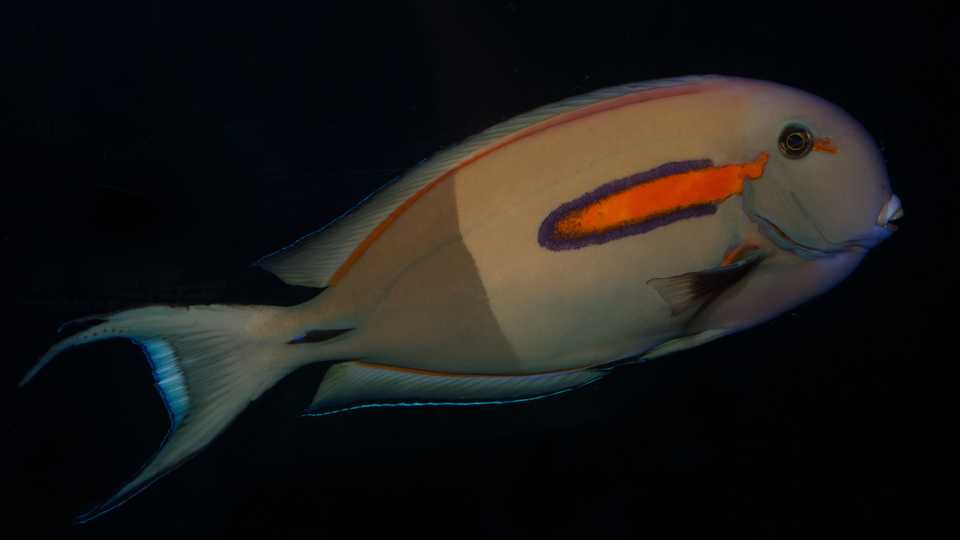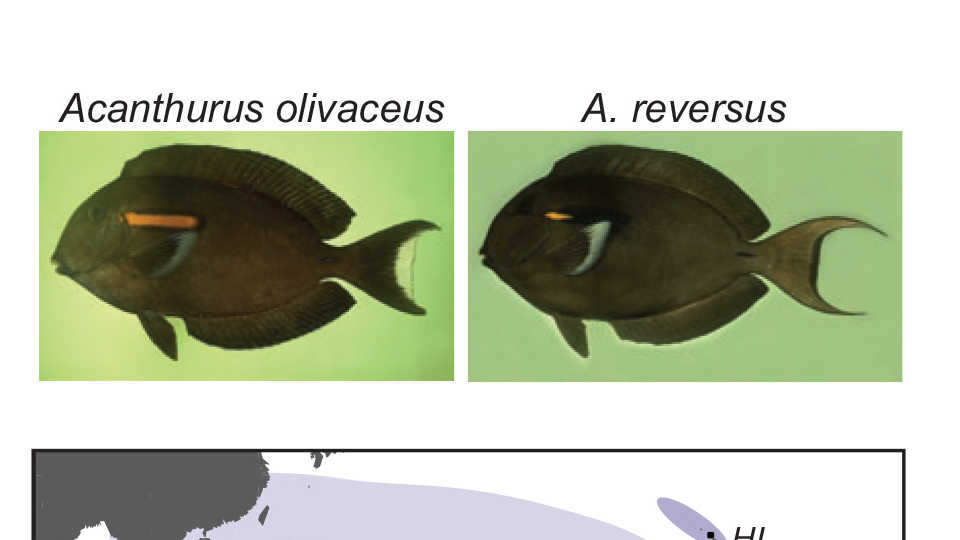How does one species become two? Ever since Darwin visited the Galapagos and published his theory of evolution, this has been one of the most debated questions in evolutionary biology. Darwin originally proposed that natural selection was the main force driving speciation. However, the discovery of genetics revealed that it was very hard for one species to become two in the presence of gene flow, and that while natural selection is good at transforming a species in time (through adaptation), it really isn’t powerful enough to split a species in two, and that isolation is the main mechanism.
It makes sense: if migration between populations is stopped for long enough they will become different. So natural selection’s role has been downplayed for the past 100 years or so. However, in a paper that appeared in Molecular Ecology this week, my collaborators and I used a powerful genomic tool to show that natural selection has driven one population of surgeonfish to become a species at the Marquesas, but a second population, only isolated geographically in Hawaii, has not differentiated.
Traditionally, studies of this type used only a few DNA sequences (or markers) from 10-20 individuals per population to measure differentiation. But this traditional approach didn’t give us the desired resolution: the Hawaiian population (identical in color to the central Pacific population) was indistinguishable from the Marquesas population (with very different color and recognized as a different species). What makes this observation even more interesting is that it seems like both Hawaii and the Marquesas have been cut off from the widely spread central Pacific population for about the same time.
To resolve this question we used RAD-seq, a method that allows us to compare thousands of markers across populations. Using this method, we were able to determine that the Marquesas population is unique: there, 59 of the 3,737 markers analyzed seem to be under selection. The Hawaiian population is differentiated from the central Pacific, but that differentiation is different than the one in the Marquesas. While the Marquesas populations shows a strong signal of divergence driven by natural selection, the Hawaiian one does not and seems to be diverging due to isolation.
In addition, one of the markers under selection at the Marquesas is an Opsin Rh2 gene. Reefs in the Marquesas are characterized by upwelling, turbidity, temperature fluctuations, algal blooms, and little coral cover, whereas reefs in Hawaii and the central Pacific are the typical clear blue water reefs. This Opsin gene is one of the genes responsible for color vision, and selection at this gene might be caused by the different water color (and fish color) at the Marquesas. Therefore, the evidence presented in this paper confirms that natural selection can be an important driver of diversification in the sea.

